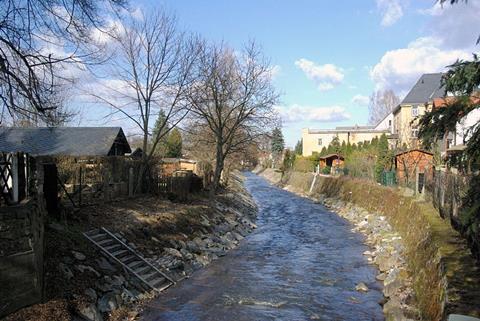Antimicrobial resistant genes (ARGs) from wastewater can end up in natural biofilms in rivers, but they may not stick around very long.

This week in mSphere, researchers report that after ARGs are introduced to a river they invade and initially join natural biofilms.
But as the temperature of the river increases, the abundance of those invasive ARGs drops off significantly, suggesting that the already-present community of microbes edge out the resistant newcomers. For river water at 30 degrees Celsius (86 degrees Fahrenheit), the level of ARGs returned to its initial state after only two weeks.
The finding suggests that rivers may offer a kind of defense against the spread of ARGs in wastewater. It was also contrary to what the researchers expected. Most ARGs in wastewater originate in human feces and thrive at the temperature of the human body, which is higher than most waterways. The microbiologists anticipated that warm rivers would be a welcome environment.
Climate change
“We thought they should be rather well-adapted to higher temperatures,” said microbiologist Uli Klümper, Ph.D., at Technische Universität Dresden’s Institute of Hydrobiology. “So if river temperatures are rising with climate change, we wanted to know if these bacteria from wastewater would have an easier time integrating with the natural biofilms.”
Klümper co-led the study with his Ph.D. student Kenyum Bagra, who joined TU Dresden on a DAAD exchange fellowship from the Indian Institute of Technology Roorkee, led the study. The work was funded through the ANTIVERSA project by BiodivERsA, a European biodiversity organization.
Klümper, Bagra and their colleagues first immersed 27 glass slides in the Lockwitzbach River, in eastern Germany, for a month. “It’s relatively pristine,” Klümper said. They collected the slides, which had amassed a natural biofilm from the river, and immersed them in artificial river systems at 1 of 3 temperatures. After a week, they observed that the abundance of naturally occurring ARGs increased in the warmest water, at 30 degrees Celsius.
Wastewater exposure
Then, they exposed all the test slides to wastewater for 1 day and monitored the abundance of ARGs, both those that occurred naturally and those from wastewater, over the next 2 weeks. The ARGs from the wastewater readily invaded the biofilm in all 3 cases, with no difference in abundance by temperature.
“The introduction seems to be temperature independent,” Klümper said.
But that’s where the similarities ended. In the warmest water, the abundance of the invasive ARGs dropped significantly over two weeks. By the end of the experiment, the overall level of ARGs had returned to its initial, natural abundance, and the invasive ARGs had all but vanished. In the other two groups, the invasive ARGs fared better. In some cooler samples they were able to establish in the biofilm community, even at abundances far higher than the naturally occurring ARGs.
Complex system
Those results suggested that the competition between invasive and indigenous microbes was mediated by temperature, Klümper said. “We were really surprised.” Researchers often assume that a warming world will promote pathogenic ARGs, he said, but it’s likely not so straightforward. A river is a complex system, Klümper said, and responds to warming in ways that are difficult to model. “It’s not only one effect that’s at play,” he said.
In addition, he noted that in their experiment, the initial sample came from a pristine river and a single exposure to wastewater, but in many cases wastewater is constantly released. “So in those biofilms there might be members that originated from wastewater but adapted well to that ecosystem,” he said.
Klümper hopes the study will not only inform future work into understanding how rivers may act as barriers against the spread of antimicrobial resistance, but also play a role in improving environmental surveillance of emerging risks.







No comments yet